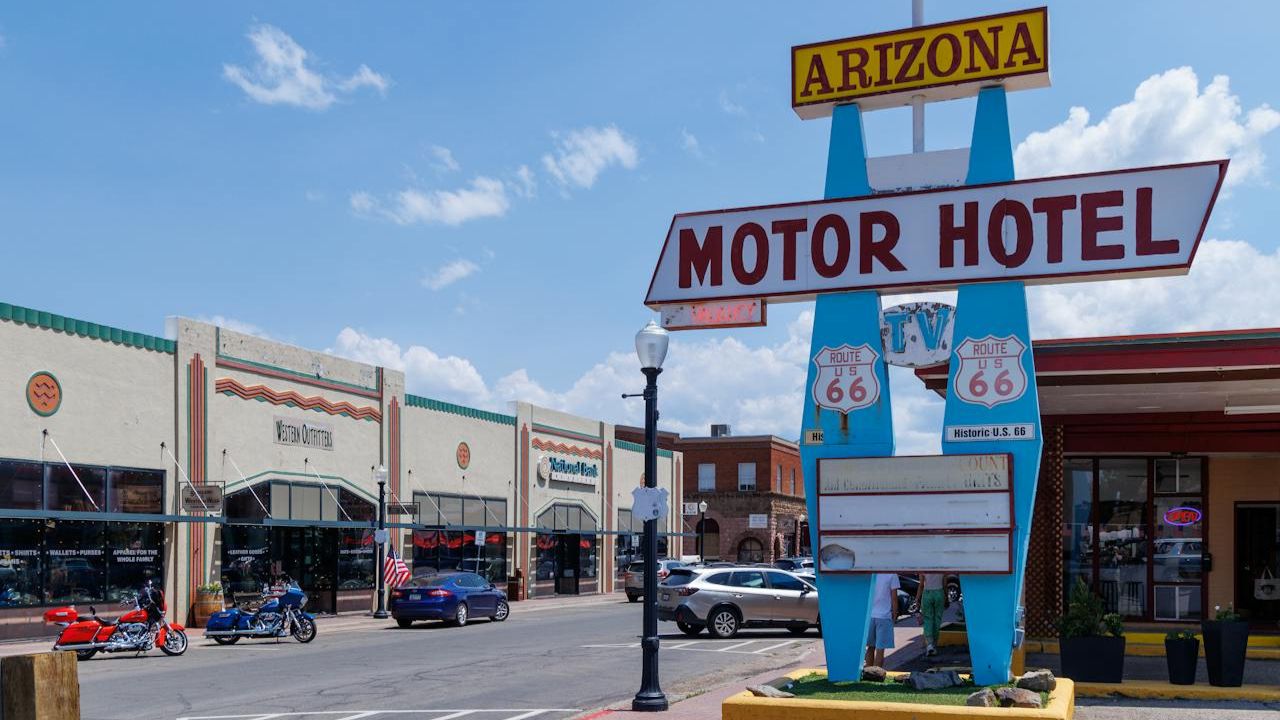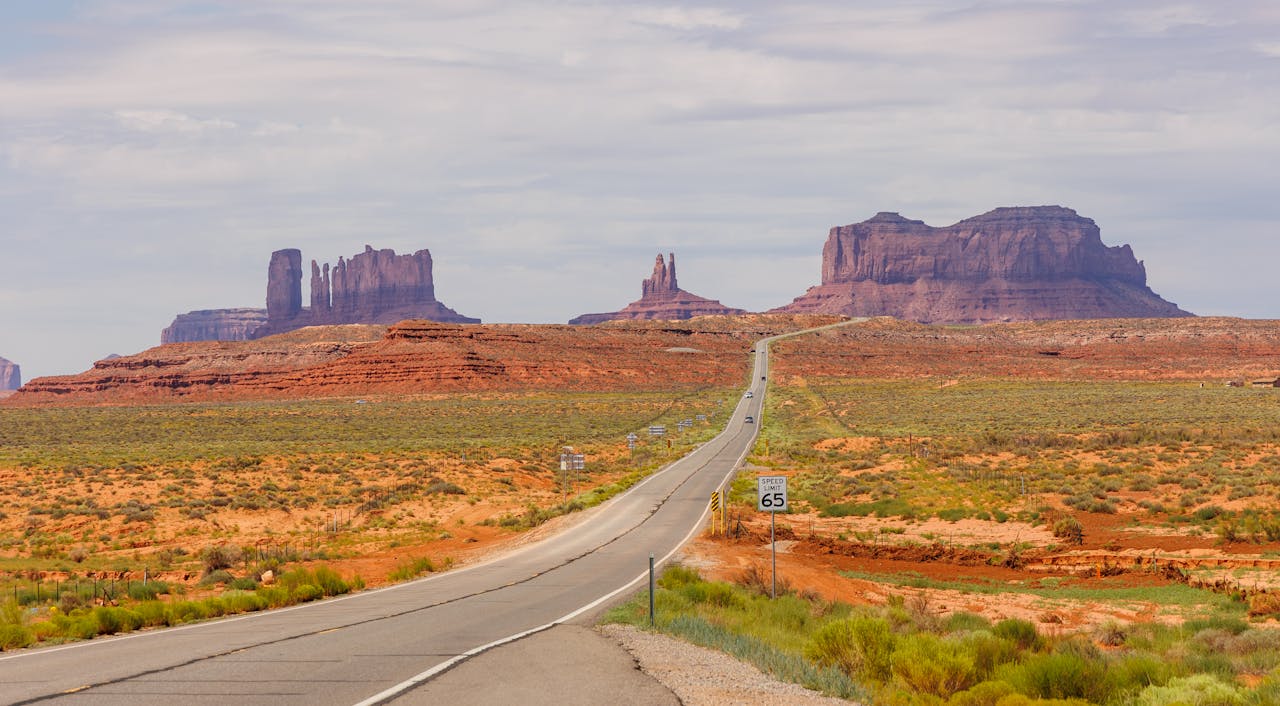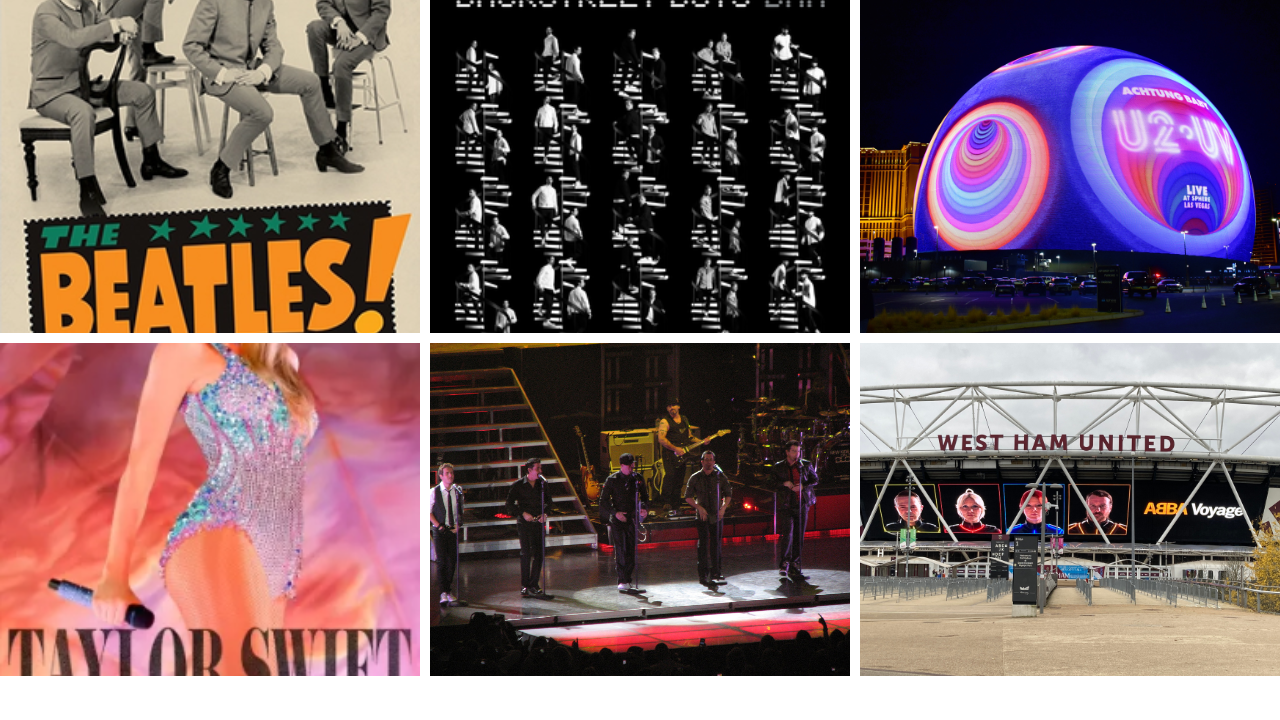Route 66 is the classic American road trip, roughly 2,448 miles from Chicago to Santa Monica across eight states. Opened in 1926, the Mother Road linked small towns to big cities and filled up with neon, diners, and roadside art. Many stretches still welcome travelers with museums, motor courts, and quirky stops that survived the interstate era. Use this list to plan photos, snacks, and smart detours so a long drive becomes a highlight reel you will remember well after the last mile marker. Bring a paper map or offline list so cell dead zones do not derail plans.
1. Begin Route 66 Sign – Chicago
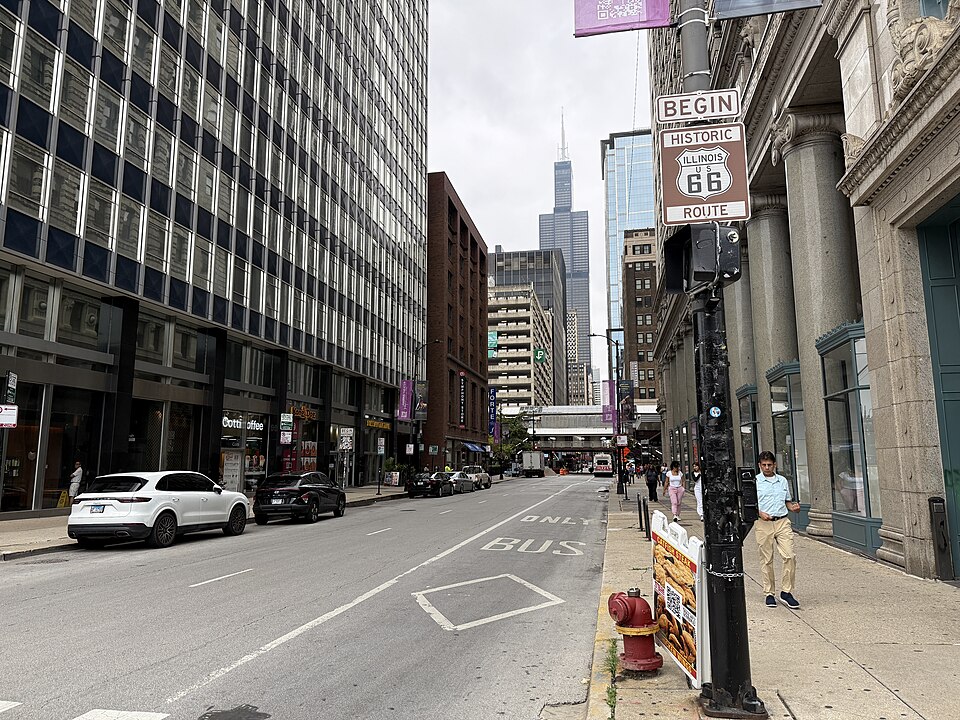
Start at the Begin Route 66 sign on East Adams Street in downtown Chicago. It marks the modern launch point near the Art Institute and the old westbound alignment that once carried thousands of cars a day. Adams is one way, so plan a quick stop or loop for a clean photo without blocking traffic. This simple marker turns day one into a milestone and sets your direction toward Illinois towns, prairie views, and the first classic diners you will meet on the road. The original route left downtown via Jackson Boulevard before realignments shifted the start point over time.
2. The Gemini Giant – Wilmington, Illinois
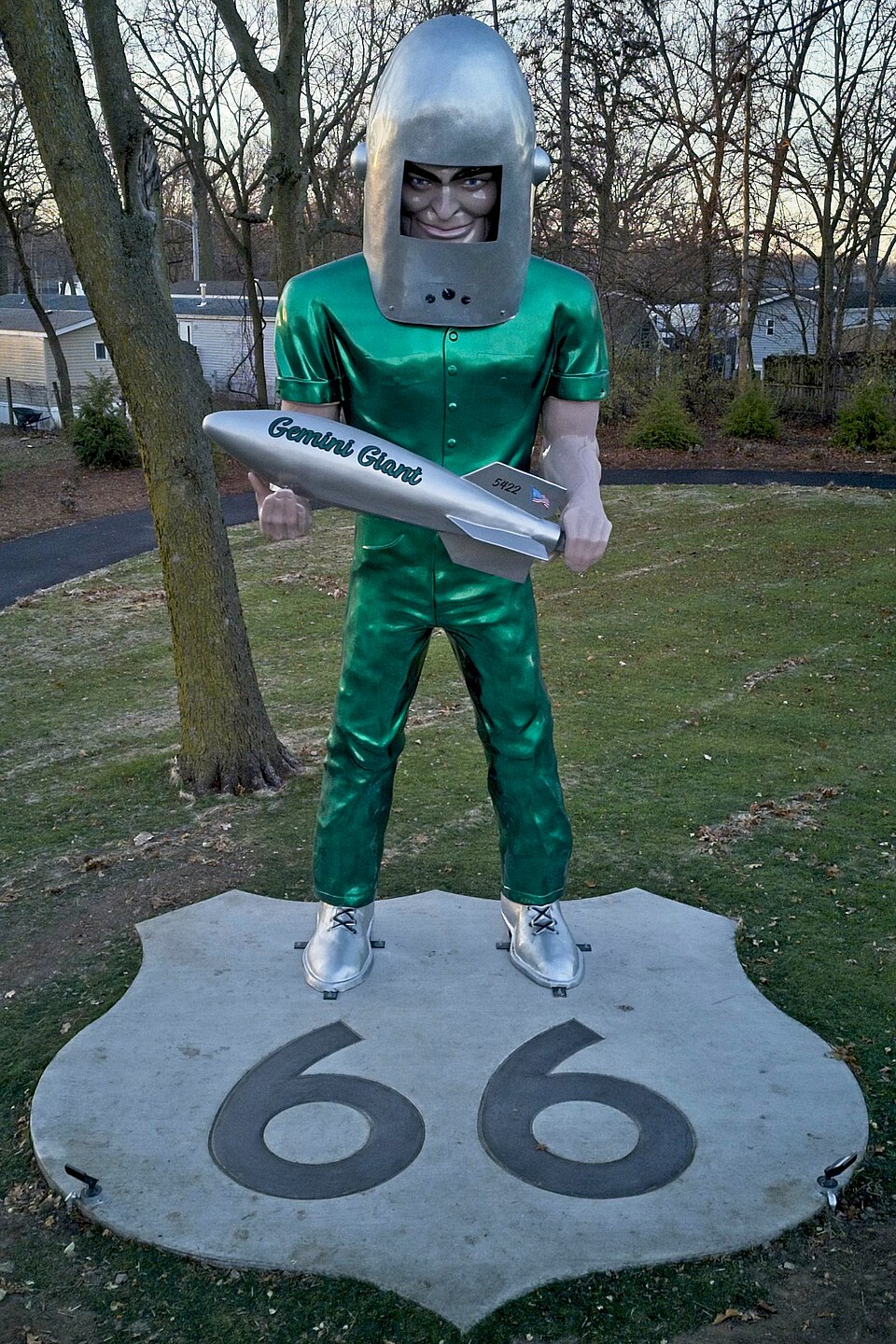
Meet the Gemini Giant in Wilmington, a 30-foot fiberglass Muffler Man holding a silver rocket. Built in the 1960s beside the Launching Pad diner, it blends space-age optimism with roadside advertising that once pulled families off the highway. The scale makes it a natural selfie stop and a quick lesson in mid-century marketing. Look for the helmet, boots, and green suit that made this statue one of the most shared images from the Illinois stretch of Route 66. Statues like this once advertised auto shops and tire dealers along busy corridors in dozens of towns.
3. Chain of Rocks Bridge – St. Louis, Missouri
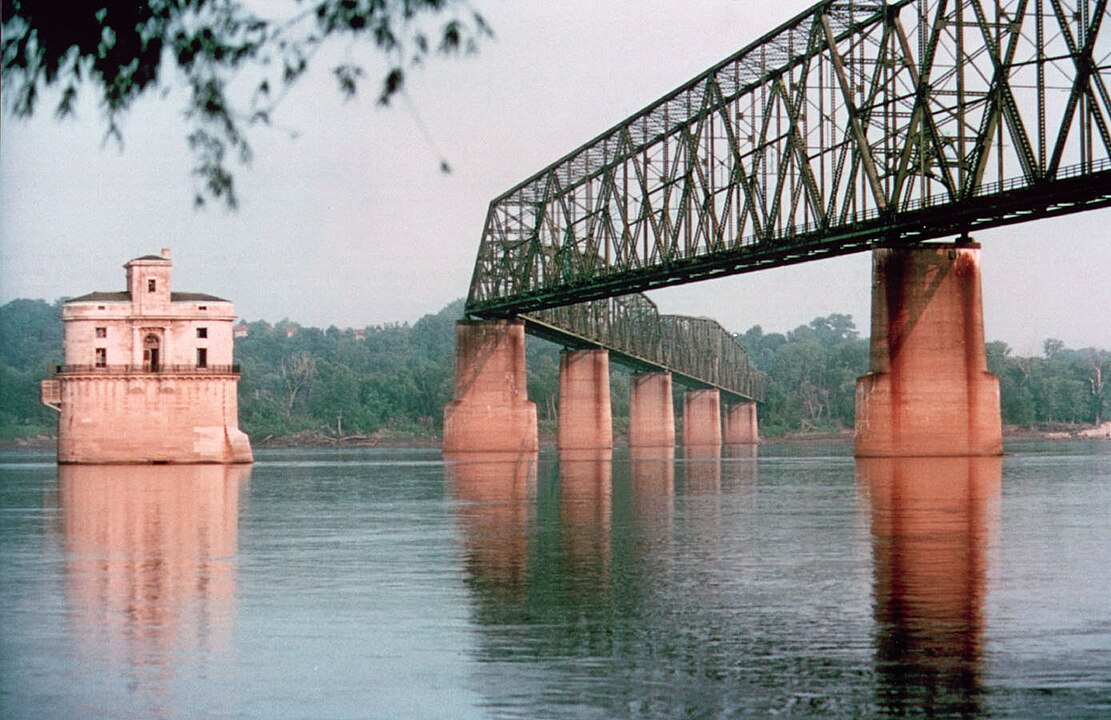
Walk the Chain of Rocks Bridge at St. Louis, a 5,353-foot Mississippi crossing with a rare 22-degree bend at mid span. Opened in 1929, it once carried Route 66 traffic and now welcomes walkers and cyclists only, which makes lingering easier. Views of river intake towers and long steel trusses create dramatic photos from nearly every panel. The odd angle at the center forms a strong perspective line you will not find on typical bridges, perfect for wide shots and group pics. The deck towers about 60 feet above the water in places, giving broad views of barges and the city skyline.
4. Meramec Caverns – Stanton, Missouri
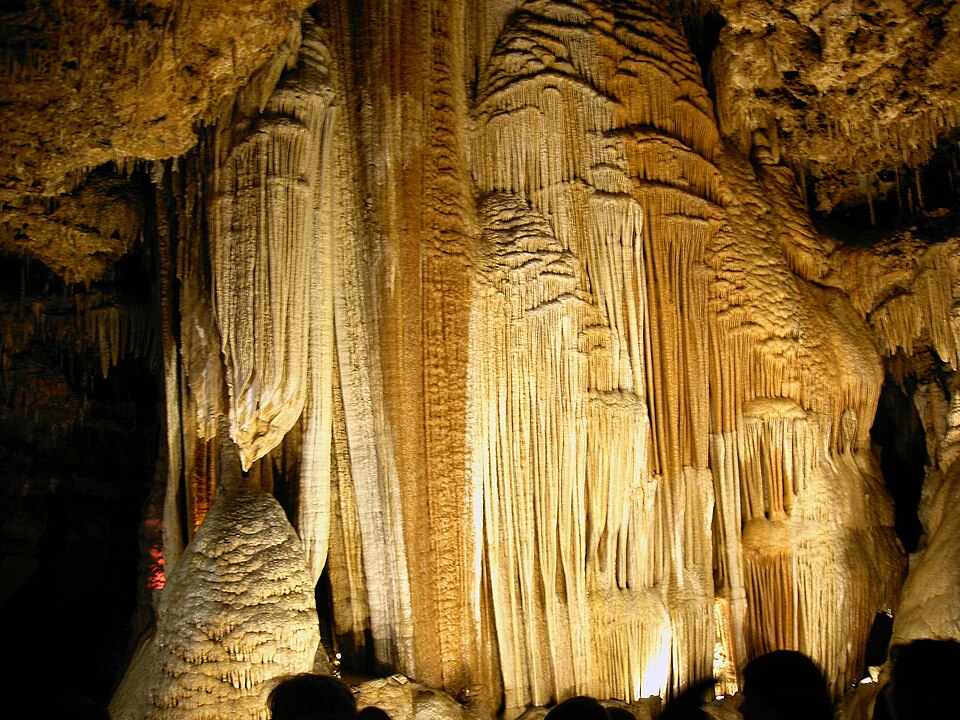
Cool off at Meramec Caverns near Stanton. Guided tours last about 1 hour 20 minutes and cover roughly 1.25 miles through rooms with stalactites, flowstone, and mirrored pools. Billboards made the cave famous long before social media, but the steady underground air near 60 degrees is the real treat on hot days. Tours depart often, so it fits tight itineraries and adds science class vibes to a road trip that mostly happens under big sky. Expect stairs and paved walkways, comfortable shoes make the tour easier and safer for everyone.
5. Blue Whale of Catoosa – Oklahoma
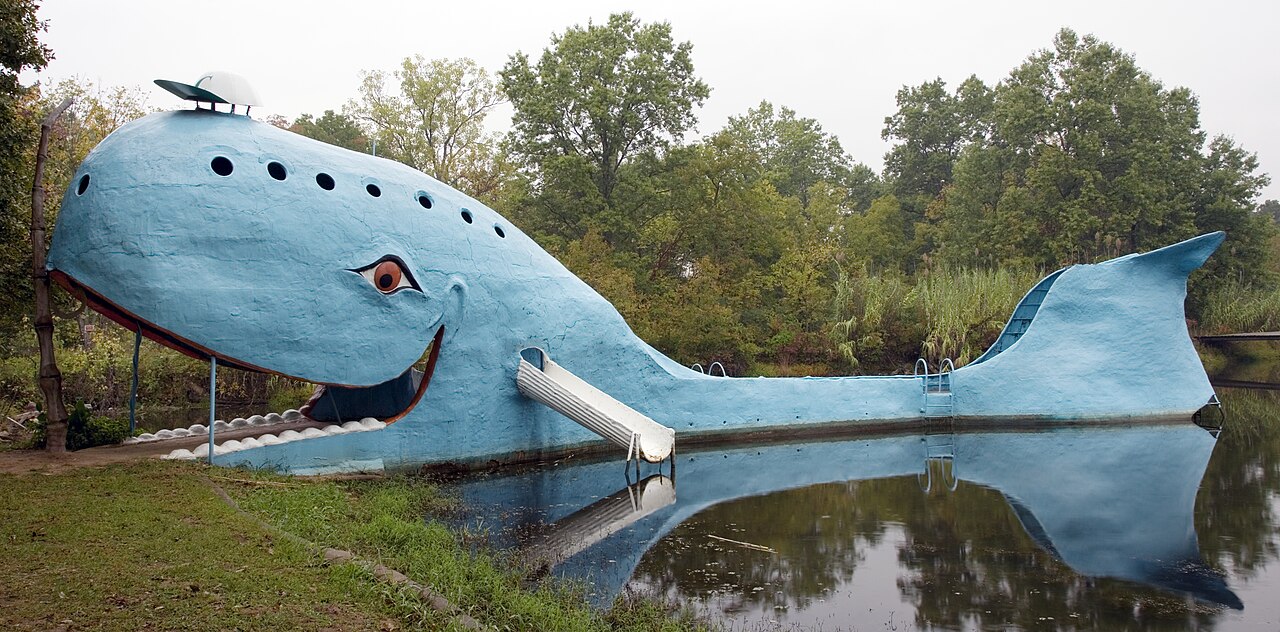
Wave at the Blue Whale of Catoosa, a bright blue concrete whale about 20 feet tall and 80 feet long. Built in the early 1970s as a family surprise, it became a community landmark and a favorite Route 66 photo stop for travelers of every age. Walk the small pier, circle the pond, and check the smile that stretches nearly the length of the head for a fun close up. It is pure roadside whimsy and proof that small, joyful ideas can become state famous when enough people share the picture. A 90 acre park surrounds the pond, so there is space to stretch your legs before the next driving stint.
6. Oklahoma Route 66 Museum – Clinton, Oklahoma
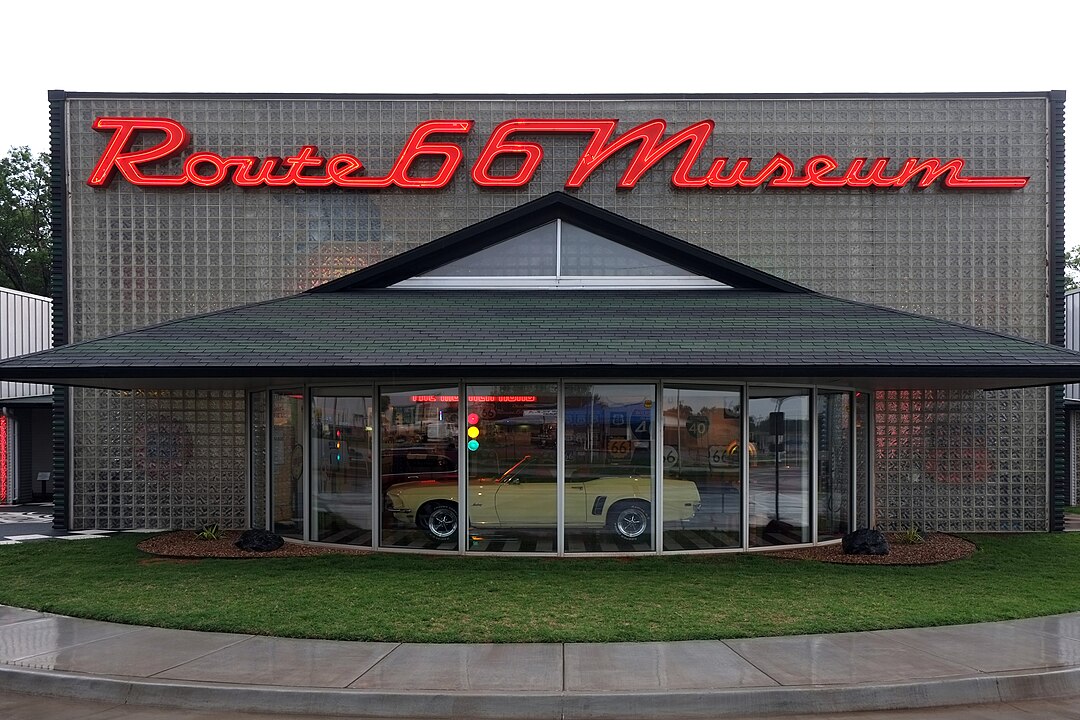
Get context at the Oklahoma Route 66 Museum in Clinton, operated by the Oklahoma Historical Society. Exhibits move era by era, from dust bowl caravans to chrome age motels, neon, and jukeboxes that shaped road culture. You can trace how the highway influenced music, food, and family vacations and why the route still draws classic cars. A one hour visit gives names, dates, and timelines that make the rest of your trip feel connected and more meaningful. Plan roughly 45 to 60 minutes inside, longer if you like to read every panel or browse the gift shop.
7. Cadillac Ranch – Amarillo, Texas
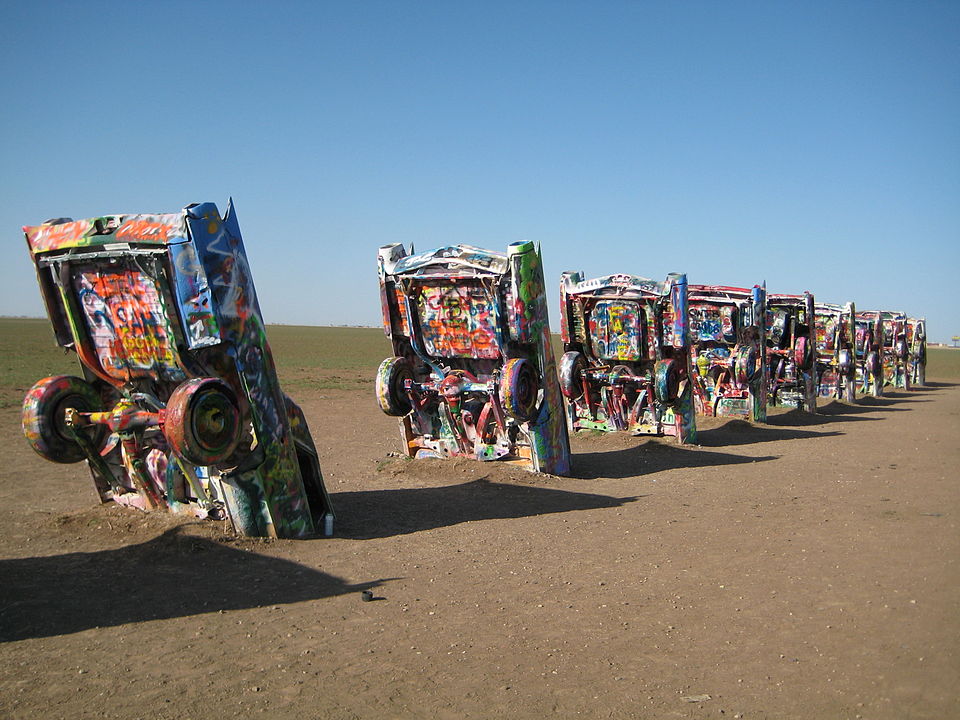
Stop at Cadillac Ranch in Amarillo, where ten Cadillacs from 1949 to 1963 stand nose down in a Panhandle field. Created in 1974 by artists, the lineup shows the rise and fall of tailfins across the years and turns design into sculpture. Visitors add fresh paint layers, so the colors change daily and the look never repeats. Bring a camera, respect the site, and see how a playful idea became one of the most recognizable public artworks on any highway. The cars are set at the same angle and distance, a line that photographs well from the south side.
8. Midpoint Cafe – Adrian, Texas
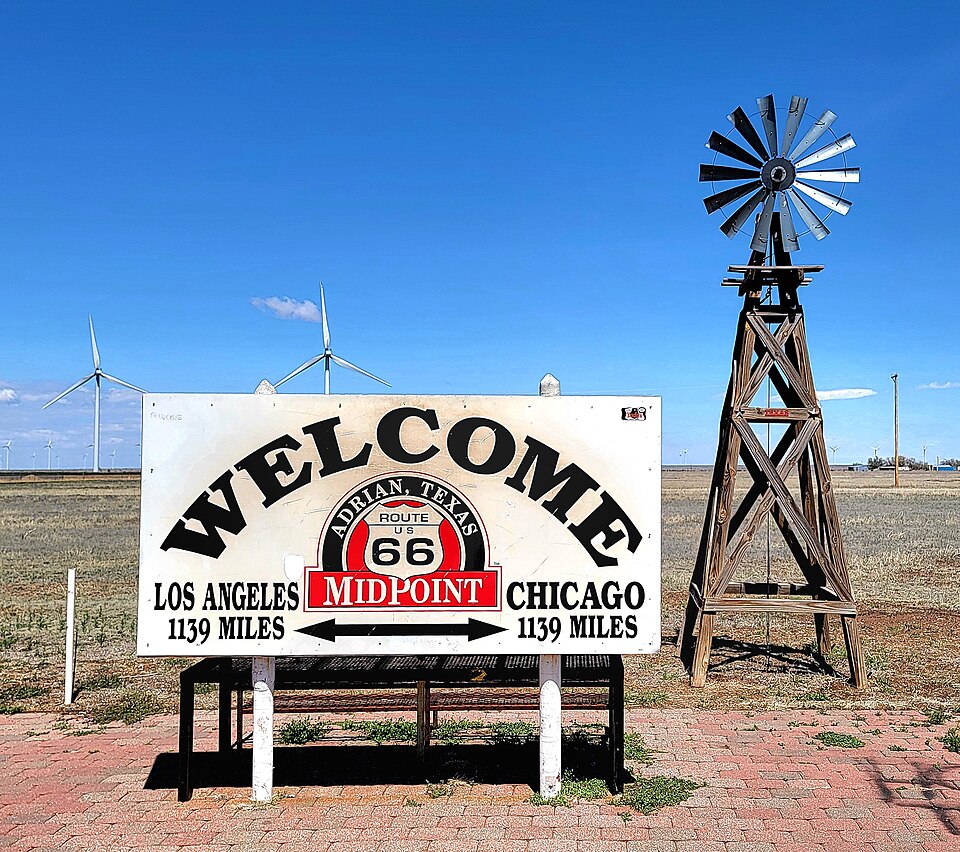
Park at Midpoint Cafe in Adrian and celebrate the halfway mark of the route. The painted sign reads 1,139 miles to Chicago and 1,139 miles to Los Angeles, a perfect symmetry for the best photos. Order pie, rest your legs, and post a caption that proves you reached the middle after long plains miles. This small stop resets energy and turns a long drive into two balanced chapters with a clean turning point you can point to on a map. At 3,779 feet elevation, Adrian sits on the High Plains, so sunsets can be wide open and vivid.
9. Blue Swallow Motel – Tucumcari, New Mexico
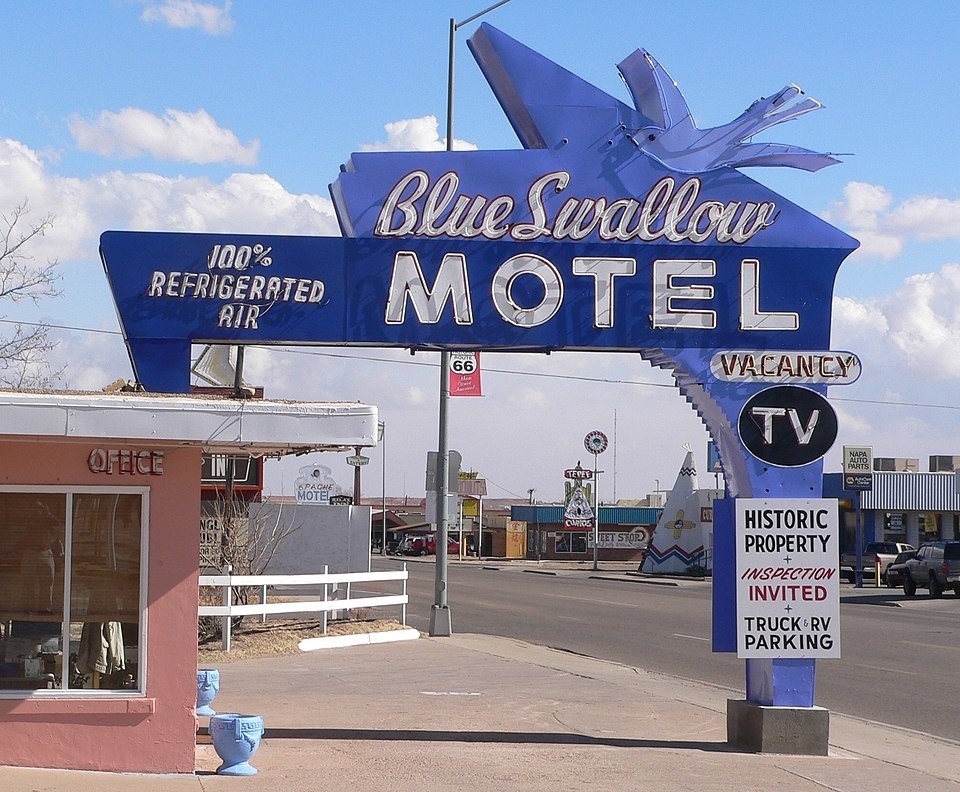
Check in at the Blue Swallow Motel in Tucumcari, open since 1939 with glowing neon and garage bays next to many rooms. Family stewardship kept the motor court feel alive even after interstates pulled traffic away from town. Arrive near dusk to watch the neon script light the courtyard and the bird outline flicker to life. It is a working time capsule that shows how independent motels welcomed drivers during the golden age of Route 66 travel. The motel sits on old Tucumcari Boulevard, a strip once lit by more than 2 miles of neon signage.
10. El Rancho Hotel – Gallup, New Mexico
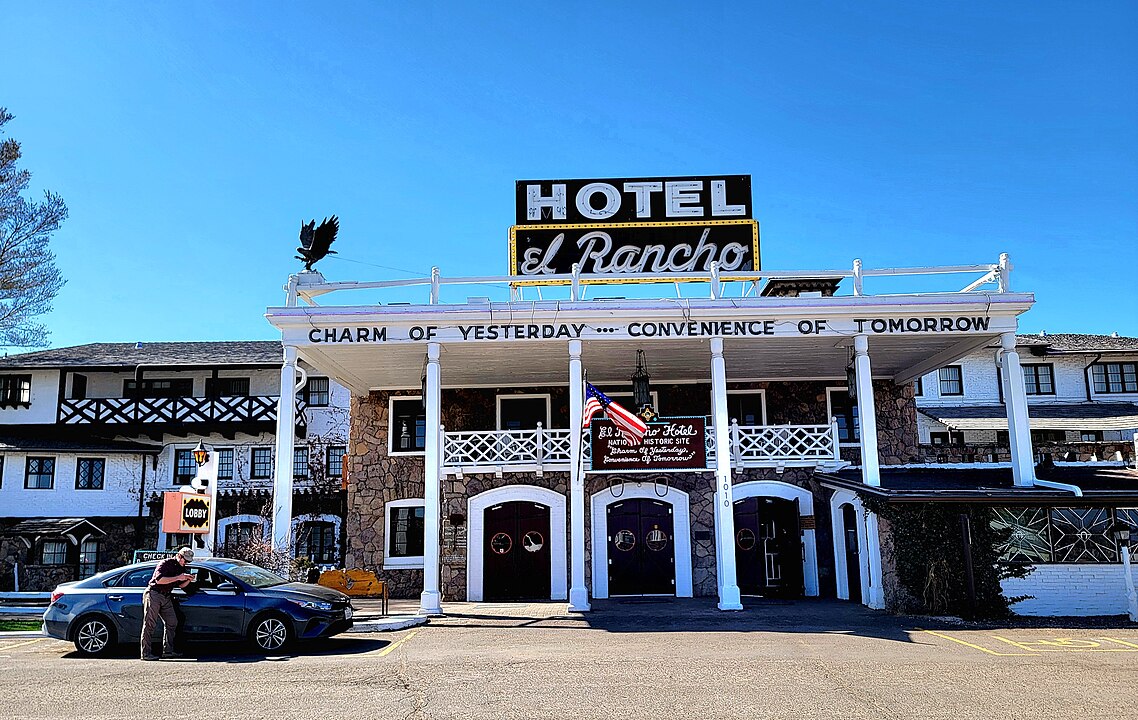
Step into film history at El Rancho Hotel in Gallup, built in 1937 as a base for Western movie crews working across the desert. The lobby mixes heavy timber, stone, and a grand staircase, and guest lists have included Hollywood legends from the studio era. Posters and photos line the halls, turning a simple overnight into a museum walk you can do at your own pace. Staying here puts you inside the story of how the Southwest became a star on screen. Many rooms carry the names of stars who stayed, a nod to the location’s long studio connection.
11. Route 66 Pullout – Petrified Forest National Park, Arizona
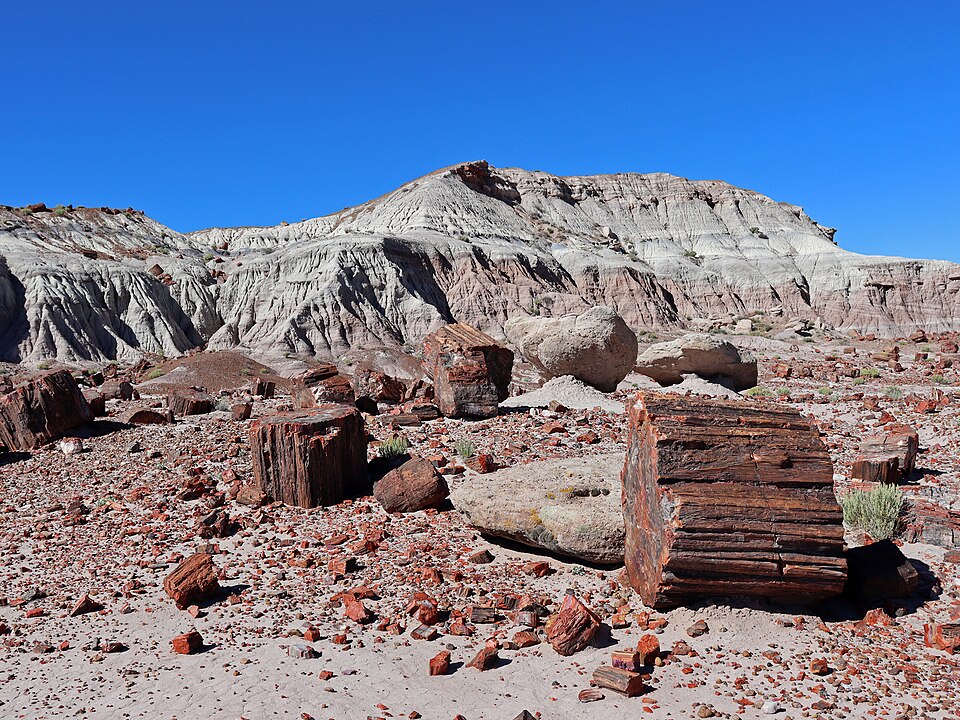
Inside Petrified Forest National Park, a rusted 1932 Studebaker marks the old Route 66 alignment across the Painted Desert. The car sits beside the ghostly roadbed, making a quick stop feel like a time jump to the earliest cross-country travelers. Wide views show pastel badlands and big sky that roll to the horizon on all sides. It is a short pullout with huge context, linking a national park landscape to the era when long-distance driving felt brand new. The park protects around 346 square miles, so allow extra time if you plan scenic stops nearby.
12. Wigwam Motel – Holbrook, Arizona
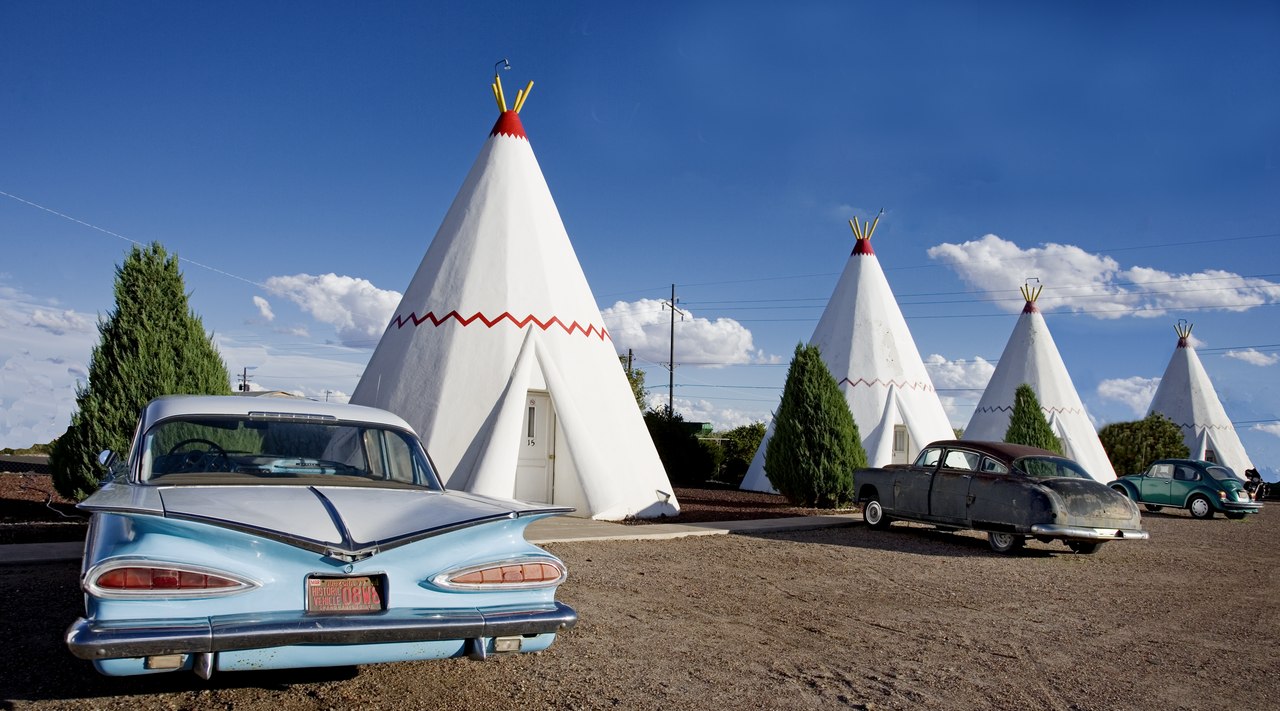
Sleep in a concrete teepee at the Wigwam Motel in Holbrook, part of the famous Wigwam Village chain. This site dates to 1950 and features 15 individual wigwams around a classic motor court with angled parking. Units rise roughly 32 feet and often have vintage cars parked out front for photos and late night neon glow. It is a bucket list stop that turns a simple overnight into the main attraction for your travel scrapbook. The Holbrook property is Wigwam Village No. 6, one of only a handful of surviving sites nationwide.
13. Hackberry General Store – Arizona

Pause at Hackberry General Store in Arizona, a 1930s stop revived in the 1990s as a shrine to Route 66 culture. Vintage pumps, maps, and weathered signs fill the property, and cold drinks offer quick relief on hot desert days. The store sits between Kingman and Seligman, making it a natural leg stretcher on this stretch. You will leave with postcards and camera roll proof that roadside charm survives far from big cities and malls. Even the soda cooler and license plates inside read like a timeline of cross country travel.
14. Oatman – Arizona
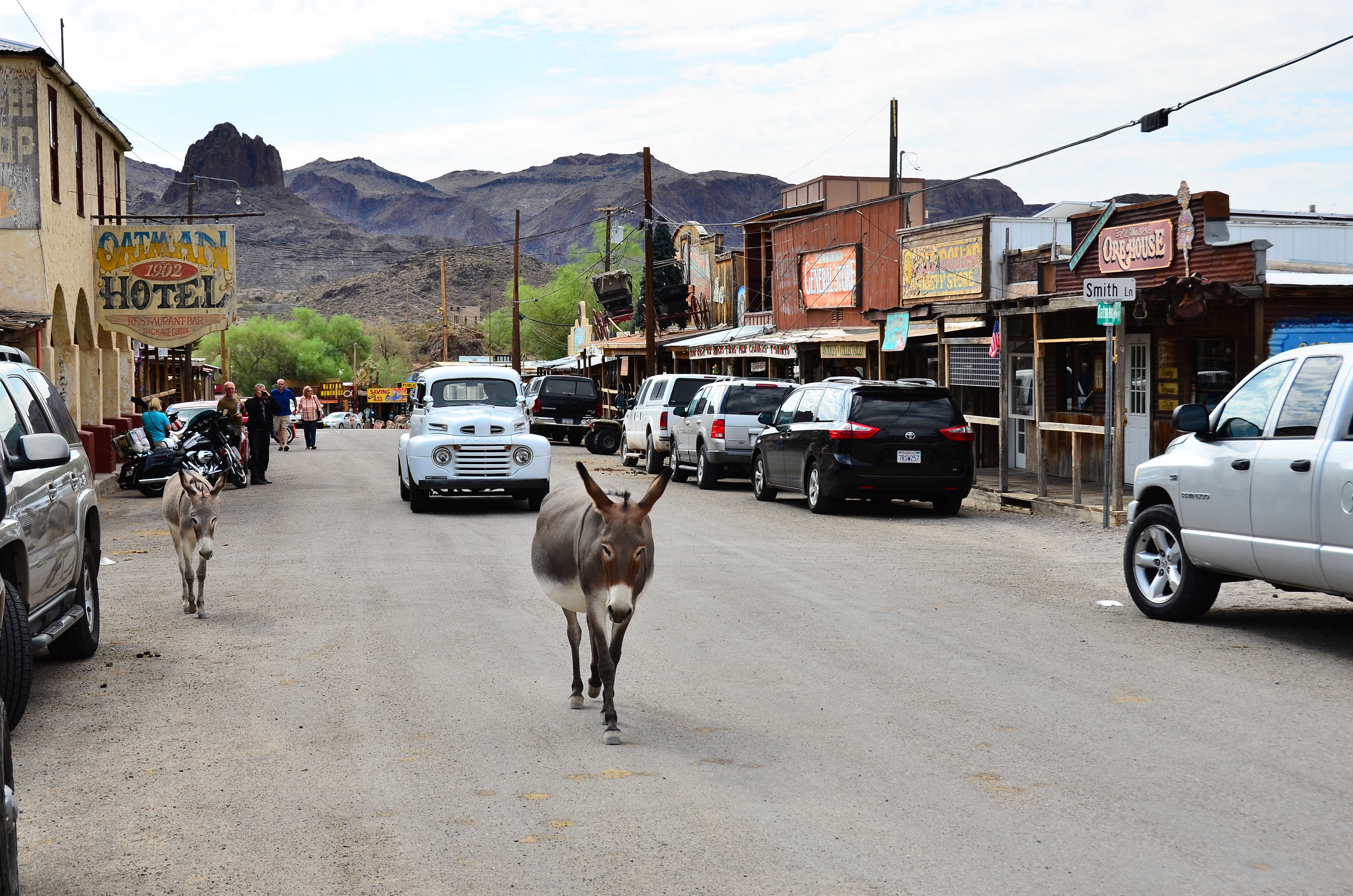
Drive the curvy approach to Oatman, a former mining town where free-roaming burros wander Main Street in search of snacks. Shops line wooden sidewalks and daily scenes feel like a set from an old Western with real dust and mountain views. The animals descend from miners’ pack stock and are now a protected draw for visitors who use care. This short detour delivers unforgettable photos, rugged switchbacks, and a living slice of Arizona high desert life. Summer highs can push past 100 degrees, so water and patience with traffic are both smart plans.
15. End of the Trail Sign – Santa Monica Pier
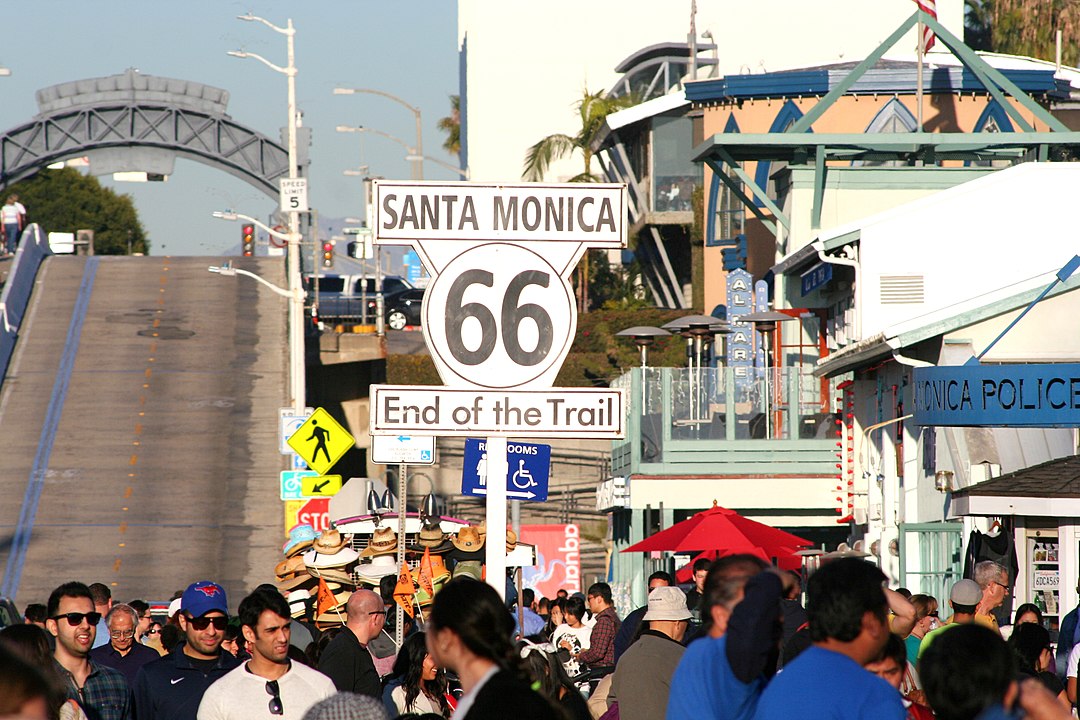
Finish at the End of the Trail sign on the Santa Monica Pier. Installed in 2009 with help from local volunteers, it honors the tradition of ending Route 66 at the Pacific after days of highway. Grab the sign shot, ride the Ferris wheel, and watch the sun drop into the ocean from the wooden deck. Ending here turns a cross country drive into a coast to coast story with a final chapter written in bright lights and sea air. The pier opened in 1909 and now draws millions yearly, a busy but fitting finale for a road built on crowds.
